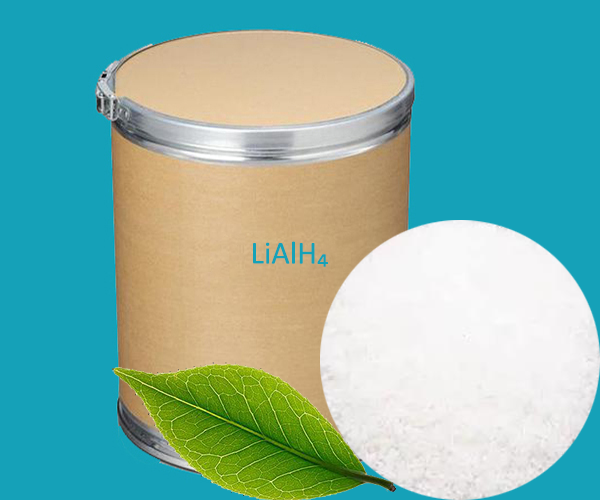Lithium aluminum hydride (LiAlH₄) is an inorganic compound composed of lithium, aluminum, and hydrogen. It is a white solid that is stable at room temperature and pressure, but it is easy to absorb moisture and react with water vapor in the air, so it needs to be operated and stored in an anhydrous and oxygen-free environment.
Lithium aluminium hydride is an extremely powerful reducing agent that is widely used in reducing reactions in organic chemistry. It can reduce many functional groups, such as ketones, aldehydes, carboxylic acids, esters, amides, acid chlorides, azides, nitro compounds, etc., to produce corresponding alcohols or amines. Due to its strong reducing ability, lithium aluminum hydride is often used in the synthesis of complex organic molecules, especially in medicinal chemistry and natural product synthesis.
Lithium aluminum hydride is a strong reducing agent, which has a wide range of applications in organic synthesis. Here are some of the main uses of lithium aluminum hydride:
1. Reduction of aldehydes and ketones: Lithium aluminum hydride can reduce aldehydes and ketones to the corresponding alcohols, which is one of the most common applications in organic synthesis.
2. Reduction of carboxylic acids and esters: Lithium aluminum hydride is able to reduce carboxylic acids and esters to alcohols, which are commonly used in the synthesis of primary and secondary alcohols.
3. Reducing amides: Lithium aluminum hydride can reduce amides to amines, and this reaction is usually carried out under solvent-free conditions to avoid the formation of alcohol by-products.
4. Reduced acyl chloride: Lithium aluminium hydride can safely reduce acyl chloride to aldehydes without further reduction to alcohol.
5. Reduced azide: Lithium aluminum hydride can reduce azide to amines.
6. Reduction of nitro compounds: Lithium aluminum hydride can reduce nitro compounds to the corresponding amines.
7. Deprotection reaction: In organic synthesis, lithium aluminum hydride is often used to remove protective groups, such as esters, amides, nitriles, etc., to expose functional groups with higher reactivity.
8. Hydrocarbon activation: Lithium aluminum hydride can participate in the hydrocarbon activation reaction, making some inactive carbon-hydrogen bonds active, so as to carry out further functional group conversion.
9. Synthesis of drugs and natural products: In medicinal chemistry and natural product synthesis, lithium aluminum hydride is used to construct complex organic molecular structures.
10. Materials Science: Lithium aluminum hydride is also used in the field of materials science, for example as a reducing agent in the synthesis of certain metal-organic frameworks (MOFs) or other advanced materials.
 English
English Español
Español Português
Português Français
Français Deutsch
Deutsch Русский
Русский 中文
中文 日本語
日本語
